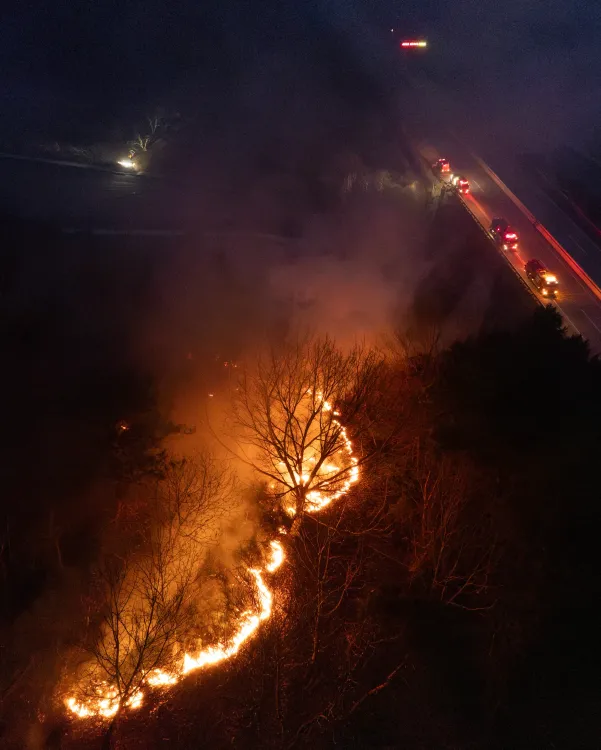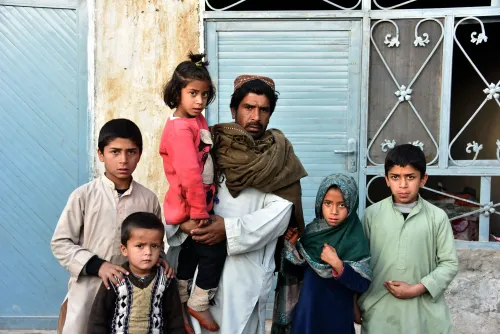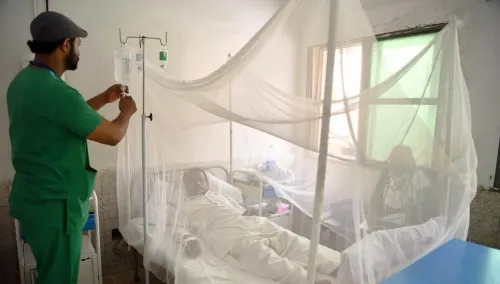Unprecedented Wildfires in Southeastern South Korea Fully Controlled, Leaving Extensive Damage and Casualties

Synopsis
Key Takeaways
- 28 fatalities reported due to wildfires.
- Approximately 38,000 people displaced.
- Over 45,157 hectares of land burned in North Gyeongsang Province.
- Firefighting efforts involved 5,580 personnel and 86 helicopters.
- Authorities suspect human activity as the cause.
Uiseong (South Korea), March 28 (NationPress) The devastating wildfires that struck North Gyeongsang Province in South Korea for an entire week have been completely contained as of Friday, thanks to improved visibility and cooler temperatures brought by overnight rainfall, which aided firefighters in extinguishing the primary infernos.
In what stands as South Korea's most catastrophic wildfire event, a series of forest fires has wreaked havoc across the southeastern area, notably South Gyeongsang Province, since last Friday, resulting in a tragic death toll of at least 28 individuals, injuring 37, and displacing around 38,000 residents, as reported by the government's disaster response agency.
The most extensive wildfire in North Gyeongsang Province was officially controlled by 5 p.m. on Friday, following approximately 149 hours since its ignition in the county of Uiseong, according to the Korea Forest Service (KFS).
Firefighting efforts are still ongoing in South Gyeongsang Province, where as of 3 p.m., an estimated 93 percent of the fires across the area had been extinguished.
“Once the main fires are extinguished, local governments and relevant authorities will concentrate on fully extinguishing the remaining embers throughout the region, which is anticipated to take an additional five to six days,” stated KFS chief Lim Sang-seop during a press briefing.
In North Gyeongsang Province alone, the disaster has resulted in at least 24 fatalities, with approximately 45,157 hectares of land scorched, which is comparable to over 63,000 soccer fields.
Combining the wildfires from both North and South Gyeongsang Provinces, around 48,000 hectares of forests have been charred, nearly 80 percent the size of Seoul.
This destruction surpasses the 23,794 hectares affected by the catastrophic east coast wildfires back in 2000, which were deemed the worst in the country up until then.
“Strong and arid winds swept through the inland areas, quickly spreading the blaze. High temperatures and dry weather further exacerbated the situation, compounded by difficulties in deploying helicopters due to haze,” Lim explained.
In a sign of hope, the overnight rainfall provided firefighters with the necessary support to regain control and focus on extinguishing the main flames across multiple locations.
On Friday, approximately 5,580 personnel, 86 firefighting helicopters, and 569 fire trucks were mobilized to ensure the complete containment of the wildfires in Uiseong and surrounding areas in North Gyeongsang Province.
The provincial government has pledged to deliver relief funds to affected residents promptly and offer additional essential support to facilitate their return to normal life.
Authorities suspect that the wildfires were ignited by human actions, as reported by the Yonhap news agency.
The fire in Uiseong reportedly started when an individual was attending to a family grave on a nearby hill, with video evidence revealing a lighter discarded on the ground.
Local police have announced plans to summon the suspect for questioning on Monday.
Experts are advocating for a significant reform of the wildfire response system, given the alarming realities of global warming.
They stress the need for securing additional equipment and manpower while suggesting a shift from fire-prone pine trees to more fire-resistant species.









